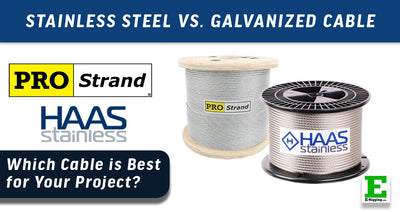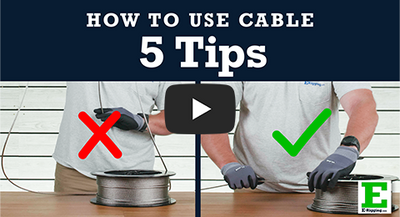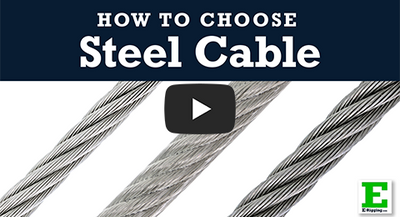Discover our vinyl-coated cable options, featuring HAAS Stainless for high corrosion resistance in marine settings and Pro Lift galvanized cables for durable, budget-friendly outdoor applications. Each cable is vinyl-coated to guard against weather, UV, and abrasion, ideal for construction, safety, and industrial use. Our video library provides guidance on installation and uses, and we offer compatible tools and hardware, including turnbuckles, thimbles, clips, and eye bolts, frequently paired with vinyl-coated cables. Build complete, long-lasting solutions for various demanding projects with quality you can trust at E-Rigging.
Related Product Categories
FAQs - Vinyl Coated Galvanized and Stainless Steel Cable
Vinyl-coated cables are commonly used in marine, construction, and safety applications due to their corrosion resistance and weatherproof qualities, making them ideal for both indoor and outdoor use. If you’re unsure which type of cable is best for your project, check out our guide to selecting cable.
Galvanized steel vinyl-coated cable is affordable and highly resistant to rust, suitable for general outdoor use. Stainless steel versions offer enhanced corrosion resistance, ideal for marine and harsh environments.
Vinyl-coated cables are layered with polyvinyl chloride (PVC), a durable plastic that adheres to the wire strands, forming a protective barrier against environmental stressors. This PVC coating helps prevent corrosion by blocking moisture and salt, especially beneficial in marine and humid environments. Additionally, it provides UV protection, shielding the metal from sunlight degradation, and abrasion resistance, reducing wear from friction and contact with rough surfaces. This extra layer enhances the cable’s longevity, especially in outdoor, industrial, and construction settings where exposure to harsh conditions is common.
Yes, vinyl-coated cables, especially stainless steel types, are ideal for marine environments due to their rust resistance and durable coating.
To remove vinyl coating from wire rope, you can use a utility knife or wire cutter to carefully trim back the coating, especially for connections and fittings, but be cautious not to damage the underlying strands.
Swaging vinyl-coated wire rope requires a swaging tool compatible with the wire’s diameter. Trim the vinyl at the swaging point to expose the wire and then use the tool to secure fittings.
For a clean cut, use heavy-duty cable cutters designed for the cable’s thickness, ensuring the vinyl coating and the internal strands are cut evenly.






